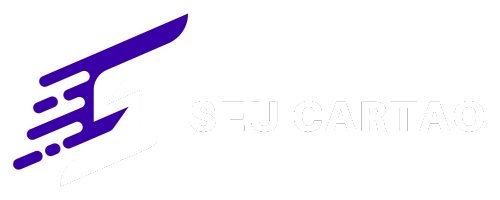The insurance industry, traditionally characterized by its conservative approach and standard models, is being a stage of important changes in insurance.
Emerging trends indicate a movement towards usage-based insurance (UBI) models, particularly in the auto insurance sector, and a growing incorporation of technology for personalized insurance solutions.
These changes signify a fundamental transformation in how insurance policies are structured, priced, and delivered, aligning more closely with individual needs and modern technological advancements.
Usage-based insurance, especially in auto insurance, is a prime example of this evolution.
UBI employs real-time data to assess risk and determine premiums, a stark contrast to the traditional method of relying on static, historical data and broad categorizations.
By utilizing telematics and IoT devices, insurers can now gather precise information on driving behavior, vehicle usage, and environmental factors.
This data-centric approach enables a more accurate assessment of risk, leading to fairer, usage-based premium models that reward safe driving and discourage risky behavior.
Simultaneously, the integration of advanced technologies is paving the way for more personalized insurance solutions.
Artificial intelligence, big data analytics, and machine learning are not just buzzwords in this context; they are tools reshaping the insurance landscape.
These technologies allow for the processing of vast amounts of data, enabling insurers to offer highly customized policies tailored to the individual’s unique risk profile and preferences.
As we delve into this theme, we will explore how these emerging trends are not just reshaping the insurance industry, but also redefining the relationship between insurers and policyholders.
This shift towards a more data-driven, customer-centric approach promises to enhance transparency, fairness, and value in the insurance domain, marking a new era in risk management and protection.
The Rise of Usage-Based Auto Insurance: Revolutionizing Risk Assessment and Premium Calculation
The traditional model of auto insurance is undergoing a significant transformation with the advent of usage-based insurance (UBI).
This innovative approach uses telematics technology to monitor driving behavior and vehicle usage, offering a more dynamic and individualized method for risk assessment and premium calculation.
UBI models are particularly revolutionary because they provide a real-time, data-driven evaluation of risk, a stark contrast to the conventional reliance on demographics and historical data.
The core of UBI is the ability to track variables such as miles driven, time of day, driving speed, braking patterns, and even the types of roads used.
This granular data allows insurers to create a highly accurate risk profile for each driver, leading to premiums that are more reflective of individual driving habits.
Safe drivers benefit from lower rates, incentivizing responsible driving behavior, which can contribute to overall road safety improvements.
The adoption of UBI also signifies a shift towards a more customer-centric approach in the insurance industry.
Policyholders gain greater control over their insurance costs, and the transparent nature of data collection and usage ensures that premiums are fair and personalized.
Moreover, UBI models can foster stronger relationships between insurers and customers, as frequent interactions through telematic devices and apps provide opportunities for enhanced services, such as real-time feedback on driving habits and personalized tips for safer driving.
As UBI continues to gain traction, challenges such as privacy concerns, data security, and the need for robust technological infrastructure must be addressed.
However, the potential benefits of improved risk assessment, fairer pricing, and enhanced customer engagement position UBI as a key driver of innovation in the auto insurance sector.
Technological Advancements in Personalized Insurance Solutions
The integration of technology in the insurance sector is not just transforming existing models; it’s creating new paradigms for personalized insurance solutions.
Advancements in artificial intelligence (AI), big data analytics, and the Internet of Things (IoT) are enabling insurers to tailor policies to the specific needs and risk profiles of individuals, moving away from the one-size-fits-all approach.
AI and machine learning algorithms play a pivotal role in analyzing vast amounts of data, drawing insights that were previously inaccessible.
These technologies can assess risk with greater accuracy, predict future trends, and automate routine tasks, leading to more efficient operations.
For consumers, this means more customized insurance products that align with their unique lifestyle and risk factors.
IoT devices, such as wearable health monitors and smart home sensors, provide real-time data that insurers can use to develop personalized health and property insurance solutions.
For instance, individuals who maintain a healthy lifestyle or implement safety measures in their homes can benefit from lower premiums and rewards, encouraging proactive health and safety practices.
The challenge in this evolving landscape is balancing innovation with privacy and security.
As insurers collect and analyze more personal data, ensuring data privacy and protecting against cyber threats become paramount.
Moreover, there is a need for clear regulatory frameworks to guide the ethical use of technology in insurance.
The integration of technology in insurance represents a significant opportunity to provide more personalized, efficient, and transparent services.
As insurers navigate these changes, the focus will increasingly be on leveraging technology to deliver solutions that are not just financially beneficial, but also aligned with the individual needs and values of policyholders.
Conclusion
In conclusion, the insurance industry is standing at the precipice of a transformative era, marked by the shift towards usage-based models and the increased incorporation of technology for personalized insurance solutions.
This evolution represents a paradigm shift from traditional, one-size-fits-all approaches to a more dynamic, data-driven, and customer-centric model.
Usage-based insurance, especially in the auto sector, is revolutionizing the way premiums are calculated, aligning costs more closely with individual behavior and risk.
This not only promotes fairness and transparency but also incentivizes safer practices among consumers.
The integration of advanced technologies like AI, IoT, and big data analytics is further tailoring insurance solutions to the unique needs and lifestyles of individuals.
This technology-driven approach allows for more accurate risk assessment, efficient processing, and the development of innovative products that resonate with modern consumers’ expectations of personalization and flexibility.
However, with these advancements come challenges, particularly in terms of data privacy, security, and the need for robust regulatory frameworks.
The insurance industry must navigate these challenges carefully, ensuring that innovation does not come at the expense of consumer trust and ethical standards.
Ultimately, these changes in insurance models are not just reshaping the industry; they are redefining the relationship between insurers and policyholders.
By focusing on personalized, data-driven solutions, the industry is poised to offer more relevant, transparent, and value-driven services, aligning itself more closely with the evolving needs and preferences of today’s consumers.
This shift towards a more adaptable and responsive insurance model marks a significant step forward in the journey of modernizing and humanizing the world of insurance.
Did you like the content? Activate notifications so you don’t miss any news on our blog. See you next time!”






